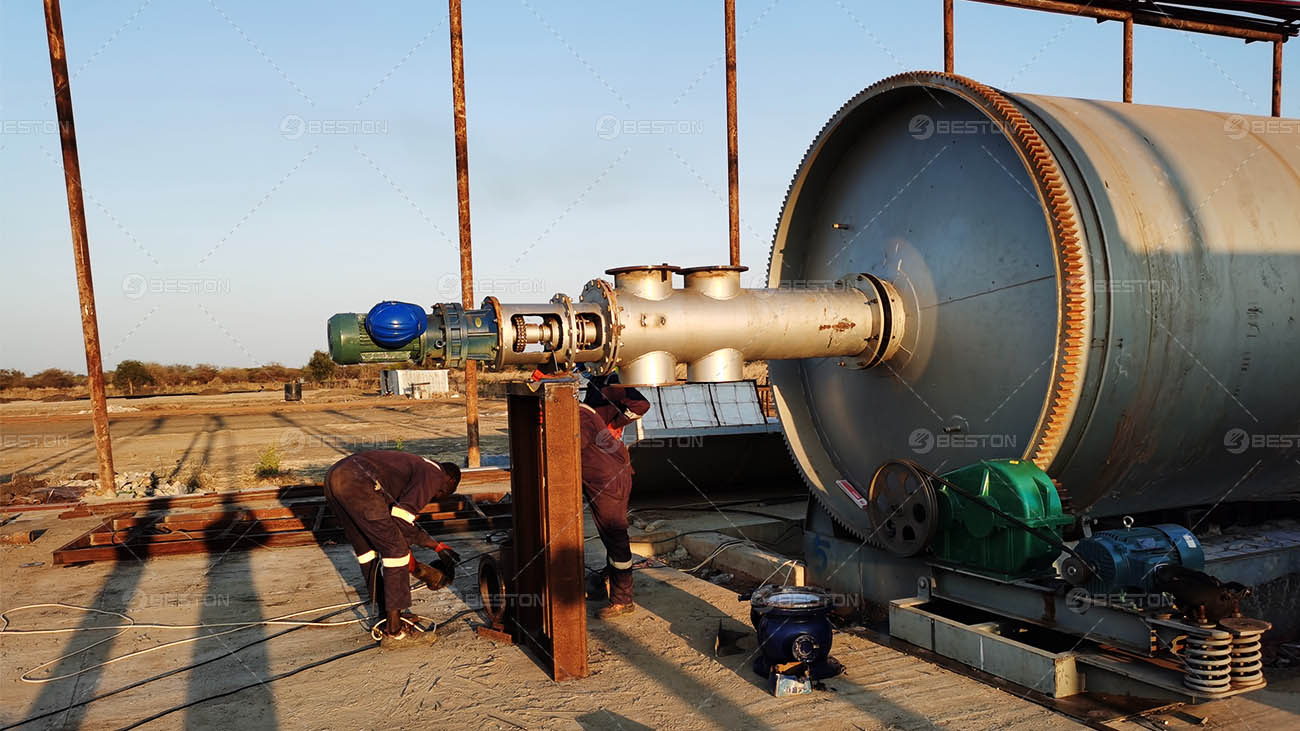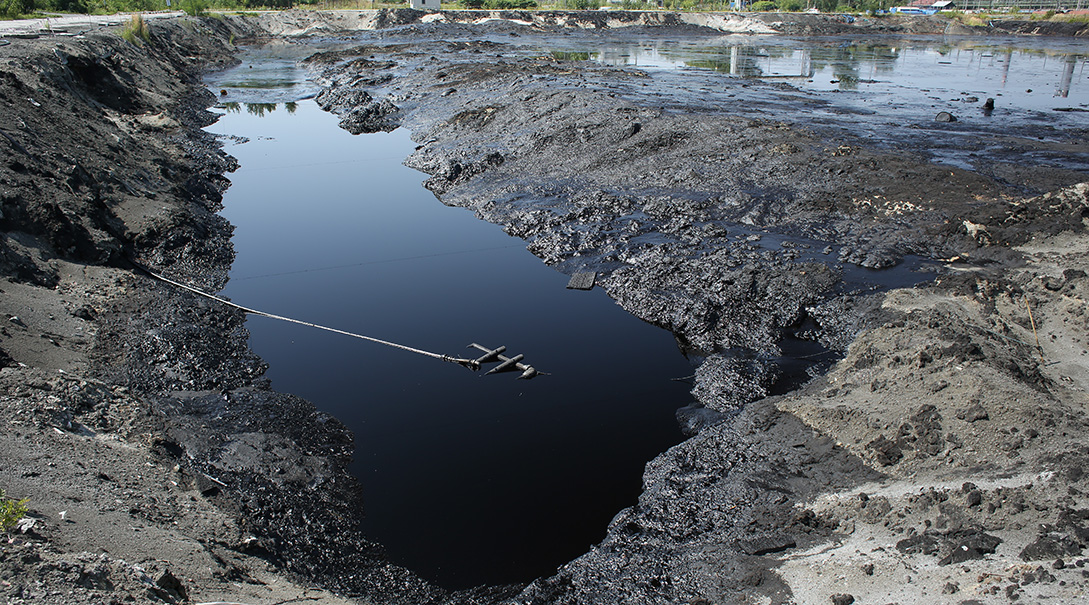In the intricate ecosystem of the oil and gas industry, the byproduct known as oil sludge emerges as a potent environmental threat. Improper handling of this hazardous waste not only poses immediate risks but also engenders long-term ecological consequences.
This article delves into the multifaceted environmental hazards of mishandling oil sludge, shedding light on the urgency of adopting responsible disposal methods, such as oil sludge pyrolysis plant.

Understanding Oil Sludge: A Complex Conundrum
The Genesis of Oil Sludge
Oil sludge, a viscous mixture of oil, water, and solid contaminants, is a byproduct of oil refining, drilling, and storage activities. Its composition varies, encompassing hydrocarbons, heavy metals, and toxic compounds. This complexity underscores the challenges inherent in its management and disposal. In order to maximize the value of solid waste recycling, Beston Group Co., Ltd. provides oil sludge recycling solutions. Welcome to consult.
Diversity in Composition
The composition of oil sludge is influenced by factors such as the source of the crude oil, the refining process, and the treatment methods employed. As a result, oil sludge may contain a heterogeneous blend of organic and inorganic constituents, each with its own set of environmental implications.
The Persistence of Oil Sludge
One of the defining characteristics of oil sludge is its persistence in the environment. Due to its high viscosity and adhesive properties, oil sludge can linger in soil, water bodies, and infrastructure for extended periods, exacerbating its impact on ecosystems and human health.
Environmental Hazards of Improper Handling
The flooding of oil sludge will cause great environmental pollution. The recycling of this type of solid waste involves reduction, resource utilization and harmlessness. In fact, in the face of these treatment problems, thermal desorption unit have gradually become the main solution for recovering oil sludge.
Soil Contamination
Improper disposal of oil sludge can lead to extensive soil contamination. The infiltration of hydrocarbons and toxic compounds into the soil matrix disrupts microbial activity, alters soil structure, and renders the land unsuitable for agricultural or recreational use. This contamination poses a direct threat to terrestrial ecosystems and the food chain.
Persistent Organic Pollutants
Oil sludge contains a cocktail of persistent organic pollutants (POPs), including polycyclic aromatic hydrocarbons (PAHs) and benzene, toluene, ethylbenzene, and xylene (BTEX) compounds. These pollutants have carcinogenic, mutagenic, and teratogenic properties, posing long-term risks to human and environmental health.

Water Pollution
The discharge of untreated oil sludge into water bodies results in severe water pollution. Hydrocarbons and heavy metals present in the sludge can contaminate surface water and groundwater, compromising water quality and endangering aquatic life. The accumulation of oil sludge in water bodies also impedes oxygen transfer and disrupts nutrient cycling, leading to ecosystem degradation.
Impact on Aquatic Ecosystems
Oil sludge pollution disrupts the delicate balance of aquatic ecosystems, endangering fish, amphibians, and other aquatic organisms. The toxicity of hydrocarbons and heavy metals can cause physiological and behavioral abnormalities, leading to population decline and biodiversity loss. Additionally, oil sludge contamination renders water sources unfit for human consumption and recreational activities.
Air Quality Degradation
Improper handling of oil sludge can result in air quality degradation through the release of volatile organic compounds (VOCs) and particulate matter into the atmosphere. During storage, transportation, and disposal activities, VOCs such as benzene and toluene evaporate from the sludge, contributing to smog formation and respiratory ailments in nearby communities.
Health Risks for Communities
Communities residing near oil sludge storage facilities or disposal sites are particularly vulnerable to air pollution. Prolonged exposure to VOCs and particulate matter can lead to respiratory illnesses, cardiovascular diseases, and neurological disorders. Children, the elderly, and individuals with pre-existing health conditions are at heightened risk of adverse health effects.
The Imperative of Responsible Disposal: Introducing Oil Sludge Pyrolysis Plants
Reducing Environmental Footprint
In response to the environmental hazards posed by oil sludge, the adoption of oil sludge pyrolysis plant emerges as a sustainable solution. These specialized facilities employ thermal decomposition to convert oil sludge into valuable products, including biochar, syngas, and reclaimed oil. By diverting oil sludge from conventional disposal methods, such as landfills or incineration, oil sludge pyrolysis plants minimize environmental footprint and promote resource recovery.
Resource Recovery and Valorization
Oil sludge pyrolysis plants facilitate the recovery and valorization of resources embedded in oil sludge. Biochar, a carbon-rich byproduct of pyrolysis, can be utilized as a soil amendment to improve soil fertility and sequester carbon. Syngas generated during the pyrolysis process can serve as a renewable energy source for heat and power generation, reducing reliance on fossil fuels. Reclaimed oil extracted from the pyrolysis process can be reprocessed or reused in industrial applications, closing the loop on waste management.
Ensuring Environmental Compliance
The deployment of oil sludge pyrolysis plants ensures compliance with environmental regulations and standards governing hazardous waste management. By treating oil sludge on-site or at centralized facilities, operators mitigate the risks of accidental spills, groundwater contamination, and air emissions associated with conventional handling practices. The controlled pyrolysis process minimizes the release of harmful pollutants, safeguarding ecosystems and human health.
Conclusion: A Call to Action for Environmental Stewardship
In conclusion, the environmental hazards of improper handling of oil sludge underscore the urgency of adopting responsible disposal methods. The persistence of oil sludge in soil, water, and air ecosystems poses multifaceted risks to environmental and human health. By embracing oil sludge pyrolysis plants as a sustainable solution, industries can mitigate these hazards, promote resource recovery, and safeguard ecosystems for future generations. As stewards of the environment, it is imperative to prioritize the adoption of innovative technologies and practices that foster a harmonious relationship between industry and nature.